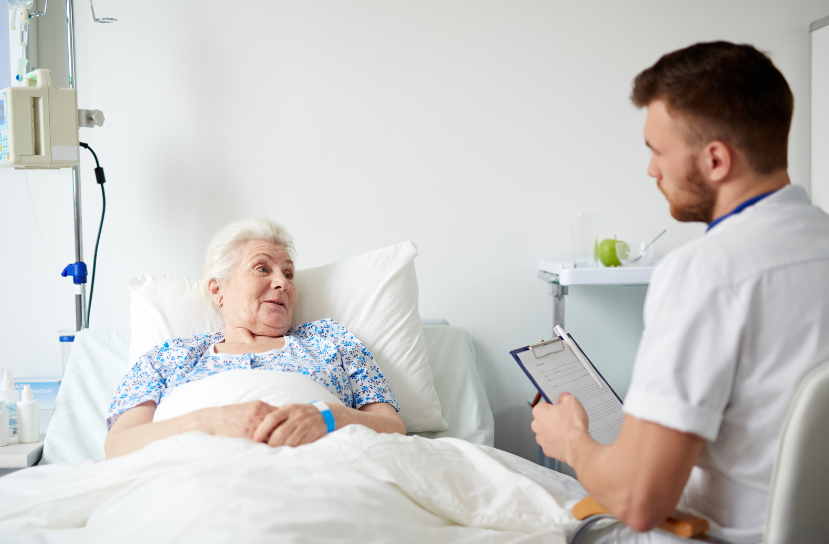What to Eat and Drink
Recovering from Diarrhea? Find out the Right Foods to Eat
Recovering from diarrhea can be unpleasant and difficult, but with the appropriate nutritional choices, the path to recovery can be made easier. Choosing what to consume at this time is critical for rebalancing your digestive system and replenishing nutrients. In this article, we’ll look at the best foods to include in your diet to help you recover from diarrhea and relieve the discomfort it causes. Whether you want to relieve symptoms or prevent future episodes, knowing what foods to eat can make a big difference in recovering your gastrointestinal health.

Immediate Dietary Actions Post-Diarrhea
Following diarrhea, it is critical to take early nutritional action to replenish lost fluids and electrolytes. This section of the article will go over two crucial nutritional measures that should be followed after diarrhea: rehydration solutions and fluid intake, and the BRAT Diet and its components.
Rehydration Solutions and Fluid Intake
The first step in healing from diarrhea is to hydrate the body. During diarrhea, the body loses fluids and electrolytes, potentially leading to dehydration. To avoid dehydration, drink plenty of fluids. Water is the most effective fluid for rehydrating the body, but coconut water, sports drinks, and clear broths can all be beneficial.
It is preferable to consume small amounts of fluid frequently rather than huge amounts all at once. This allows the body to absorb fluids more efficiently. In addition to drinks, it is necessary to eat water-rich foods like watermelon, cucumber, and celery.
BRAT Diet and Its Components
The BRAT diet is frequently recommended for patients recovering from diarrhea. BRAT stands for bananas, rice, applesauce, and toast. These foods are bland, low in fiber, and simple to digest, making them perfect for persons who have diarrhea.
Bananas are a good source of potassium, an electrolyte that is lost during diarrhea. Rice is a good source of carbs, which can help recover lost energy. Applesauce is easy to digest and contains a small quantity of fiber. Toast is a good source of carbs and is easy to digest.
It is crucial to highlight that the BRAT diet should not be followed for an extended period of time because it lacks several critical elements. As symptoms improve, it is advisable to gradually reintroduce other foods into your diet.
In conclusion, following diarrhea, it is critical to rehydrate the body by drinking enough fluids and eating meals high in water content. Following the BRAT diet might also assist in relieving symptoms and replenishing nutrients. However, if symptoms improve, other foods should be progressively introduced back into the diet.

Nutritional Considerations for Recovery
Following diarrhea, it is critical to focus on restoring the body’s nutrient balance. This can be accomplished by eating a range of foods that are easy to digest and high in nutrients. In addition, probiotics and fiber play a vital role in promoting digestive health.
Probiotics and Digestive Health
Probiotics are live microorganisms that can help restore the balance of beneficial bacteria in the stomach. They can be found in some foods, including yogurt, kefir, and sauerkraut. Consuming probiotics after diarrhea can assist in restoring the gut’s natural bacteria and improve overall digestive health.
It is crucial to understand that not all probiotics are made equal. varied strains of probiotics have varied effects on the body, therefore it is critical to select a probiotic supplement or meal with a strain that is suitable for your unique needs.
Balancing Soluble and Insoluble Fiber
Fiber is an essential ingredient that improves digestive health and regularity. However, after suffering diarrhea, it is critical to ingest fiber in moderation while balancing soluble and insoluble fiber intake.
Soluble fiber can help the intestines absorb excess water and form solid stools. Foods that contain it include oatmeal, apples, and carrots. Insoluble fiber, on the other hand, can assist in stimulating bowel movements and prevent constipation. Foods containing it include whole grains, nuts, and seeds.
Consuming a variety of soluble and insoluble fibers can assist enhance digestive health and regularity while minimizing diarrhea symptoms. It is critical to gradually reintroduce fiber-rich foods into the diet after diarrhea and monitor how the body responds.

Foods and Beverages to Avoid
After suffering diarrhea, it is critical to watch what you eat and drink. Certain foods and beverages can exacerbate your symptoms and extend your recovery period. Here are some meals and beverages you should avoid:
Dairy and High-Fat Foods
Dairy products and high-fat diets are difficult to digest and may exacerbate diarrhea symptoms. These foods include:
- Cheese
- Butter
- Cream
- Ice cream
- Whole milk.
- Fried or oily foods
- Fatty meats
Instead, choose low-fat or non-dairy options like almond milk or soy products.
Sugary, Caffeine-Containing, and Alcoholic Beverages
Sugary, caffeine-containing, and alcoholic beverages can all dehydrate the body and exacerbate diarrhea symptoms. This includes:
- Soda
- Energy drinks
- Coffee
- Tea
- Alcohol
It is critical to stay hydrated after diarrhea but stick to water, clear broths, and electrolyte-rich beverages such as coconut water or sports drinks.
Overall, avoid foods heavy in fat, sugar, artificial sweeteners, caffeine, and alcohol. Instead, choose to eat foods that are easy to digest and high in nutrients such as lean protein, fruits, and vegetables.

Gradual Reintroduction to Regular Diet
Following a bout of diarrhea, it is critical to gradually reintroduce regular diet. This process helps the digestive system adjust to new foods and avoids further gastrointestinal irritation. One of the most effective strategies to reintroduce regular foods is to eat lean proteins and carbohydrates as part of your diet.
Incorporating Lean Proteins and Carbohydrates
Lean proteins like chicken, turkey, and eggs can be gradually added back into the diet. These proteins are high in nutrients, which assist the body recover from diarrhea. To avoid food poisoning, make sure the proteins are completely cooked.
Carbohydrates like white rice, oatmeal, and pasta are also excellent for reintroducing familiar foods into the diet. These foods are easy to digest and can give the body the energy it requires. It is critical to avoid high-fat and spicy foods during this time.
Assessing Tolerance to Different Foods
When reinstating typical foods into the diet, it is critical to evaluate tolerance to various foods. The simplest approach to do this is to introduce one item at a time and monitor how the body reacts. If there are no signs of gastrointestinal distress, the meal can be included in the diet.
It is critical to avoid all foods that cause discomfort or gastrointestinal irritation. The body requires time to adjust to new foods, and patience is vital during this process. Gradually reintroducing regular foods into the diet can help the body recover from diarrhea and avoid further gastrointestinal irritation.
Finally, after a bout of diarrhea, it is critical to gradually reintroduce regular foods. One of the most effective strategies to reintroduce regular foods is to include lean proteins and carbohydrates in your diet. Assessing tolerance to various diets is also critical during this time. Gradually reintroducing regular foods into the diet can help the body recover from diarrhea and avoid further gastrointestinal irritation.
Conclusion
Finally, the foods we eat have a significant impact on our recovery from diarrhea. By eating the correct foods, we may help our bodies regain equilibrium, replenish lost nutrients, and relieve discomfort. Incorporating readily digestible meals such as bananas, rice, applesauce, and toast, as well as hydrating beverages, probiotic-rich foods, and avoiding trigger foods, can help to speed up the recovery process and improve overall digestive health. Remember, listening to your body’s cues and gently reintroducing foods as tolerated are critical stages toward full recovery. With a careful approach to eating, you may negotiate the aftermath of diarrhea more easily and ensure a smoother return to optimal health.
Trusted Health, Wellness, and Medical advice for your well-being



